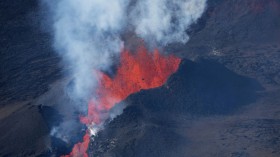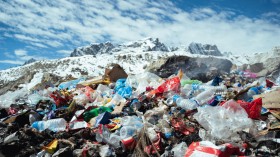Coccolithophores are microscopic marine algae that use carbon dioxide to grow and release carbon dioxide when they create their miniature calcite shells. These tiny but very abundant planktonic microorganisms could therefore be seriously impacted by current increasing carbon dioxide emissions. Scientists from the CNRS, Le Mans Université, Sorbonne Université, Aix-Marseille Université and the ESRF, the European Synchrotron, have revealed the nano-level 3D structure of their calcite shells, providing new perspectives for assessment of the role of these tiny microorganisms in the global carbon cycle. A study, published in Nature Communications, shows new correlations between their mass and the size of the organic template around which the calcite nucleation and growth take place.
You have probably never heard of them, but you may have inadvertently noticed coccolithophores in satellite images of the sea when a magnificent milky-turquoise coloured patch shows up in surface waters indicating that trillions of these single-celled calcified phytoplankton are present.
About one-third of the carbon dioxide released into the atmosphere as a result of human activity is absorbed by the oceans, where it reacts chemically and makes the water more acid. This, in turn, makes it difficult for certain calcifying marine organisms, such as sea stars, sea urchins, corals, and coccolithophores to build their shells or skeletons.
When tiny organisms impact the global carbon cycle
Coccolithophores, single-celled organisms much smaller than the pixels on your computer screen, are active players in the carbon cycle. They live in surface layers of the sea, where they use light to photosynthesize, fixing CO2 into organic matter leading to a decrease in dissolved CO2 in the ocean. Unlike other photosynthetic phytoplankton, coccolithophores produce calcite (i.e. CaCO3) in the form of minute platelets called "coccoliths". Coccolithophore calcification uses bicarbonate (HCO3) from seawater and releases CO2. When coccolithophore cells die, coccoliths and associated organic matter slowly sink to the seabed, thus contributing to the storage of carbon in the deep ocean reservoir. Although they are tiny organisms, the coccolithophores play a key role in the global carbon cycle because of the fact that they are very abundant in the oceans.
Several recent laboratory and field studies indicate that ocean acidification is likely to hamper coccolithophore calcification. However, some studies have reported an increase of coccolithophore calcification in more acidic conditions.
Unveiling the mass of coccoliths
Understanding how environmental factors influence the degree of calcification of coccoliths is therefore of significant interest. The crucial issue is to be able to accurately estimate the mass of the calcite shell of these microorganisms. "We have developed a method to estimate the mass of individual coccoliths using automated optical microscopy", says CNRS scientist Luc Beaufort. "Although this technique is very useful for measuring the mass of a large quantity of coccoliths in a short period of time, it was crucial to assess the accuracy of these measurements by comparing with another very precise method."
Scientists Alain Gibaud and Thomas Beuvier, regular users of the ESRF, put Yuriy Chushkin and Federico Zontone, scientists at the ESRF, in touch with the palaeontologists Luc Beaufort and Baptiste Suchéras-Marx and the marine biologist Ian Probert. The coherent X-ray diffraction imaging technique on ESRF beamline ID10 was used to generate incredibly detailed information on the 3D structure (and therefore mass) of shells and individual coccoliths of several species of coccolithophore.
The team were able to calibrate the optical microscopy method and found that each coccolith in the shell has different characteristics, despite all being created in the same environmental conditions. To explain the variations in coccolith size and mass within single coccolithophores, they found that the mass of coccoliths is proportionate to the size of the organic scale around which calcite nucleation occurs every 110-120 nm.
"The experiment at the ESRF was challenging because the samples, at 5 to 7microns, were almost too big for us to study. With coherent diffraction imaging, we managed to get information in 3D and reconstruct the individual calcite crystals of the coccoliths", says Yuriy Chushkin, scientist at the ESRF. "In fact, the largest samples scattered the beam so well that in one hour we had the full 3D data set that we needed", he concludes.
The next step for the team is to use the 3D computed images of these coccoliths to get a deeper understanding of how calcification is controlled by these extraordinary phytoplanktons and of the mechanical properties of these tiny but very intricate calcite structures.
© 2024 NatureWorldNews.com All rights reserved. Do not reproduce without permission.





